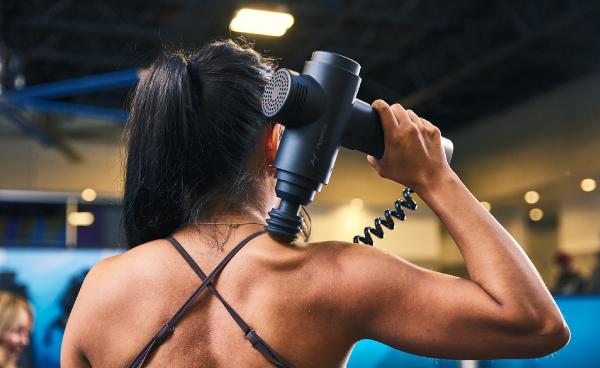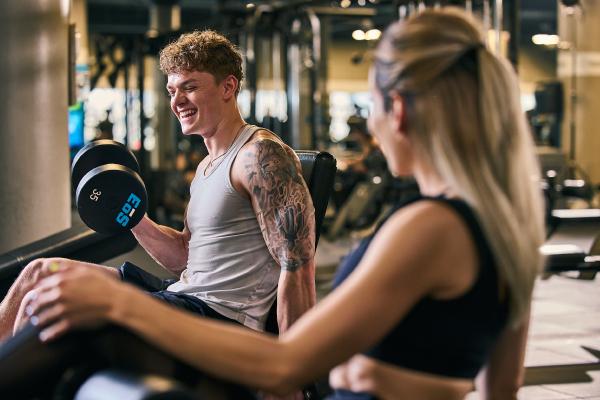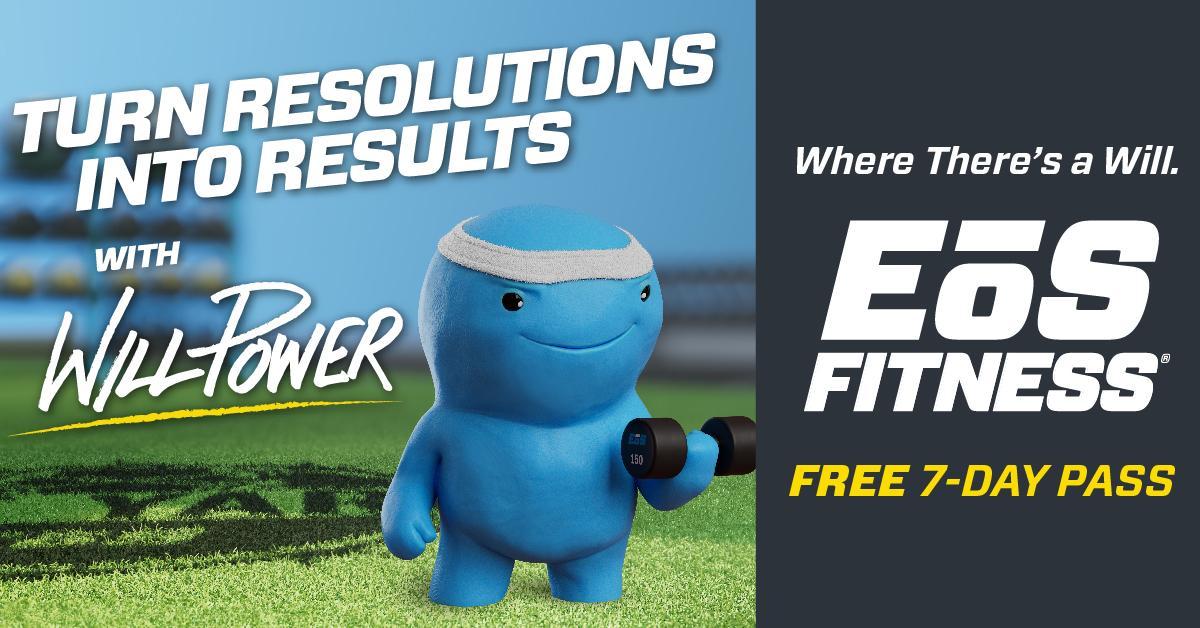WHAT IS DOMS: WHY MUSCLES GET SORE AND HOW TO RECOVER FASTER
Amenities
Fitness Tips
Nov 03, 2025 • 5min read
You crushed your workout yesterday, but today your muscles are screaming back. That next-day soreness has a name: delayed onset muscle soreness (DOMS). Whether you are just starting strength training or ramping up intensity, DOMS can feel like a frustrating roadblock. But it doesn’t have to be. By understanding the why behind soreness and tapping into smart recovery strategies, including recovery-focused amenities at EōS Fitness, you can bounce back faster and train stronger.
What is Delayed Onset Muscle Soreness (DOMS)?

DOMS is the kind of muscle soreness that usually shows up 12 to 24 hours after a tough workout and tends to peak about two days later.
It happens because your muscles develop tiny tears when you push them with something new or more intense than usual. Movements that lengthen your muscles while they are working, such as slowly lowering into a squat, are especially likely to cause soreness. The good news is that this soreness is completely normal. It is your body’s way of rebuilding and getting stronger, and it usually fades within a few days.
Is Delayed Onset Muscle Soreness Good or Bad?
When you feel sore after a workout, it can be a little uncomfortable, but also kind of rewarding. It is a sign that your muscles are responding to the challenge. But if the soreness is too intense, it can make it hard to stay consistent with your routine. DOMS can be a helpful signal that your body is adapting, but it is not the only way to measure progress. Long-term success comes from consistent effort, improved form and steady strength gains.
Train Smart:
- A little soreness is totally fine and part of the process
- Too much can be a sign to dial it back a little
- If you feel sharp pain or soreness that sticks around more than five days, talk to a professional
Common Treatments for Delayed Onset Muscle Soreness
DOMS may be common, but that doesn’t mean you have to just wait it out. There are a lot of smart ways to ease the soreness and help your muscles recover more efficiently. From gentle movement to making use of the recovery tools at your gym, these strategies can help you feel better and stay active.
Active Recovery
Moving a little, even when you are sore, can actually help. Light activity boosts circulation and helps your body recover. It does not have to be intense—just enough to get your blood flowing and your muscles moving.
- Go for a walk or do light cycling
- Stretch dynamically to keep things moving
- Foam roll gently to break up tight spots and boost blood flow
Recovery Amenities at the Gym
When you are feeling sore, your gym can do more than just give you a place to work out. At EōS Fitness, recovery-focused spaces and tools are built in to help you take care of your body after tough training sessions.
- Saunas can help increase circulation and relax sore muscles
- Recovery rooms and turf zones give you space to stretch or roll it out
- Use massage tools or resistance bands to help release tension
At-Home Remedies
You don’t have to be at the gym to start feeling better. What you do at home plays a big role in how well your body bounces back. A few simple habits can support your recovery and help you feel better faster.
- Drink plenty of water to help your body flush out waste
- Eat a mix of protein and carbs after workouts to repair muscle
- Try a cold shower or alternate between hot and cold water
- Get solid sleep! Most recovery happens while you rest
How to Recover from DOMS Faster

Speeding up your recovery is not just about what you do after your workout. It starts with how you prepare and how you cool down. Building smart habits into your workout routine can make a big difference in how your body feels the next day.
- Warm up before training to get your muscles ready
- Cool down afterward with stretching or light movement
- Schedule recovery days into your week
- Try a low-intensity workout like yoga or walking if you’re feeling tight
- Take advantage of recovery zones, turf areas and foam rollers at EōS Fitness
Should You Work Out with Delayed Onset Muscle Soreness?

If you wake up sore but still want to move, that is totally okay. Light movement can help reduce soreness. The key is listening to your body and making smart adjustments to your workout.
- Choose lighter weights or lower-impact movement
- Work on a different muscle group while the sore one recovers
- Avoid going hard on muscles that still feel beat up
- If something feels sharp or out of the ordinary, give it a rest
Preventing DOMS in the Future

You cannot avoid soreness forever, especially if you are always pushing to improve. But you can make DOMS more manageable and less disruptive by training with intention and giving your body what it needs to recover.
- Increase your workout difficulty slowly over time
- Always warm up and cool down
- Mix in flexibility and mobility sessions
- Use recovery tools regularly, not just when you’re sore
- Get guidance from a Personal Trainer at EōS Fitness to build a smart plan
Train Hard, Recover Smarter at EōS Fitness
Feeling sore after a tough workout is completely normal, but it does not have to throw you off track. With the right recovery plan and support from EōS Fitness, you can bounce back faster and keep moving toward your goals.
Want to train harder and recover smarter? Discover Amenities at EōS Fitness and see how features like saunas, recovery zones and turf training areas can help you feel your best for every workout.






